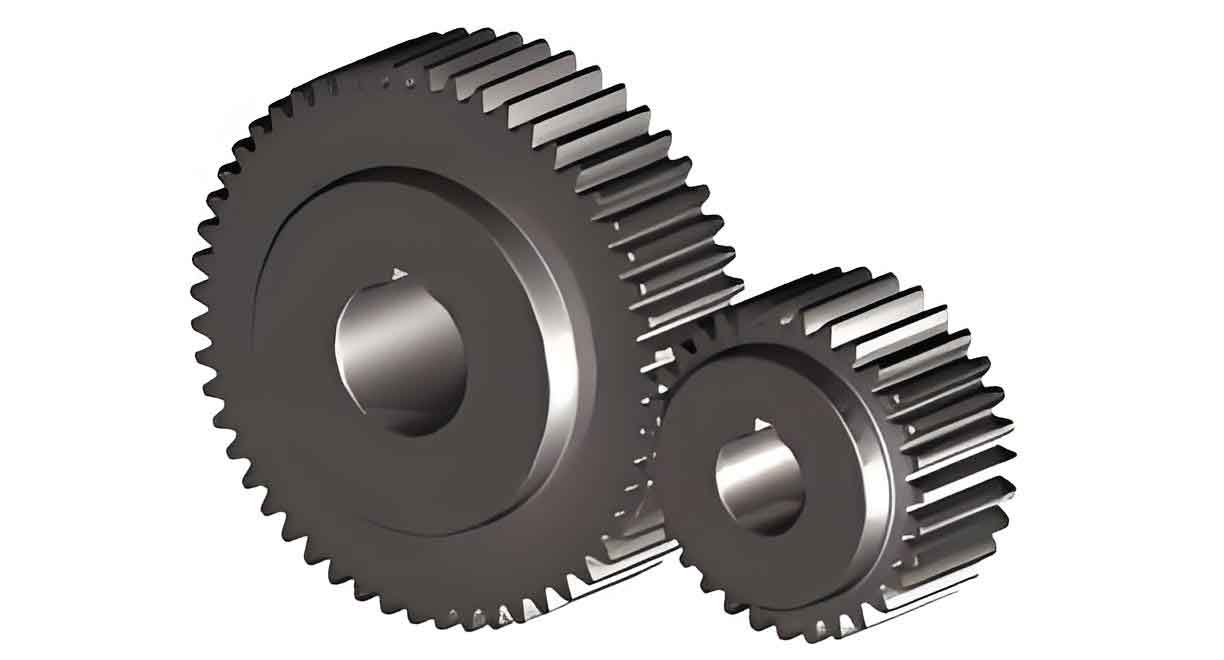Spur gears remain fundamental components in power transmission due to their simplicity, cost-effectiveness, and ease of manufacturing. However, their inherent design characteristics, such as time-varying mesh stiffness (1 < ε < 2), often lead to vibration and noise generation. This study investigates the application of viscoelastic materials—acrylic ester and polyurethane—to reduce radiated and conducted noise from spur gear end faces. Theoretical analysis, experimental validation, and parametric comparisons are presented to quantify the noise attenuation performance.
1. Mechanism of Noise Reduction with Viscoelastic Materials
Viscoelastic materials dissipate vibrational energy through molecular chain realignment and hysteresis effects. When subjected to cyclic stresses, the delayed elastic response converts mechanical energy into heat. For acoustic waves propagating through a viscoelastic layer of thickness z, the amplitude attenuation follows:
$$ A(z) = A_0 e^{-\beta z} $$
where \( A_0 \) is the initial amplitude and \( \beta \) is the attenuation coefficient. The energy dissipation per unit volume is expressed as:
$$ \Delta P = \frac{1}{2} \rho f^2 A_0^2 \left(1 – e^{-2\beta \delta z}\right) $$
where \( \rho \) is material density and \( f \) is frequency. The loss coefficient \( \kappa \), representing damping efficiency, becomes:
$$ \kappa = 2\beta \delta z $$
2. Experimental Setup and Spur Gear Parameters

A dedicated spur gear test rig was developed with the following parameters:
| Parameter | Value |
|---|---|
| Number of teeth (driver/driven) | 30/20 |
| Module (mm) | 3 |
| Pressure angle | 20° |
| Face width (mm) | 28 |
| Center distance (mm) | 75 |
Materials were applied uniformly on gear end faces at thicknesses ranging from 0.4 mm to 1.93 mm. Testing covered rotational speeds up to 720 RPM (mesh frequency \( f_m = 360 \, \text{Hz} \)).
3. Frequency-Domain Noise Analysis
Fast Fourier Transform (FFT) analysis revealed distinct noise reduction patterns:
| Material | Thickness (mm) | Noise Reduction at 360 Hz (dB) | Noise Reduction at 720 Hz (dB) |
|---|---|---|---|
| Polyurethane | 0.4 | 4.2 | 3.8 |
| Acrylic ester | 0.6 | 5.7 | 5.1 |
| Acrylic ester | 0.93 | 7.9 | 7.3 |
| Acrylic ester | 1.93 | 9.5 | 8.6 |
The relationship between material thickness (\( d \)) and noise reduction (\( \Delta L \)) follows:
$$ \Delta L = 12.3 \ln(d) – 2.4 \quad (R^2 = 0.96) $$
for acrylic ester within the tested thickness range.
4. Critical Frequency Response
Key observations from spur gear noise spectra include:
- At \( f = 6f_r \) (72 Hz): 3.2 dB reduction with 1.93 mm acrylic ester
- At \( f = f_m \) (360 Hz): 9.5 dB maximum attenuation
- At \( 2f_m \) (720 Hz): 8.6 dB reduction
The normalized damping performance \( \eta \) for spur gears is calculated as:
$$ \eta = \frac{W_d}{2\pi W_s} $$
where \( W_d \) is energy dissipated per cycle and \( W_s \) is maximum strain energy.
5. Time-Domain Performance
Continuous operation tests demonstrated stable noise reduction over 3-second intervals:
| Condition | SPL (dB) | Peak Reduction (%) |
|---|---|---|
| Baseline | 68.3 | – |
| 0.4 mm polyurethane | 64.1 | 6.1 |
| 1.93 mm acrylic ester | 58.8 | 13.9 |
6. Conclusion
This study validates that viscoelastic materials effectively reduce spur gear noise through:
- Frequency-dependent energy dissipation (200–2500 Hz)
- Thickness-dependent attenuation (up to 1.93 mm tested)
- Stable performance across rotational speeds (120–720 RPM)
Optimal results were achieved with acrylic ester layers ≥0.93 mm, demonstrating spur gear noise reduction exceeding 7 dB at mesh frequencies. Future work will explore constrained-layer damping configurations for enhanced performance.
